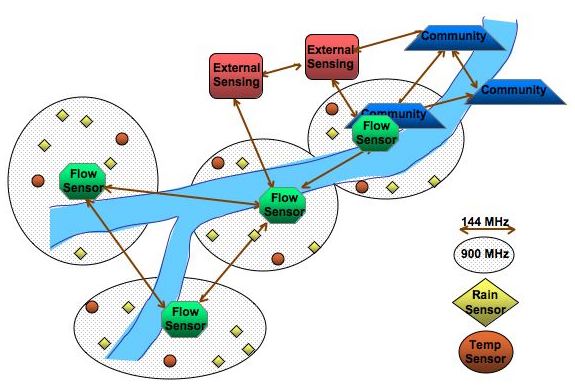
Wireless networking enables us to communicate wherever we are, without having to plug a cable into the wall. Wireless networking is also economical -- I have heard estimates of $1 million per mile to lay fiber optic cable in an urban environment where streets need to be dug up.
While most of us are familiar with basic WiFi networking that provides us with Internet access at a wireless hot spot, computer scientists and engineers are developing many exciting new ways to use wireless technology. Follow me across the fold for some examples.
1) Mesh networks
Mesh networks are used to provide complete networks without any wires connecting the devices. One way to use a mesh network is to extend Internet access beyond a single access point, as shown below. A mesh gateway provides wireless Internet access, and additional mesh nodes relay this access through each other to people using laptops and mobile devices.

Another use for mesh networks is to provide an inexpensive public safety infrastructure, connecting traffic and security cameras with fire, police and other emergency personnel:

The One Laptop Per Child project also provides mesh networking between the laptops that are in an area, so that children in a developing country can have an inexpensive way to communicate among themselves.
2) Mobile ad hoc networks
A mobile ad hoc network uses similar technology as a mesh network, except (a) all the nodes are expected to be mobile and (b) none of the nodes are expected to have Internet access. This is useful for military networks, where wired infrastructure may be unavailable:

Other uses include search and rescue after a natural disaster, where the existing cellular or Internet resources may be damaged or destroyed, or scientists collaborating on field work in a remote region of the world.
3) Sensor networks
Sensor networks are created using small, inexpensive, battery-powered sensing devices that can relay small amounts of data through a wireless network to a central data collection station. One example is volcano monitoring, to ensure that timely notice is given of impending events:

Another application of sensor networking is monitoring water flow in a river to predict flooding in advance:

Sensor networks are even being deployed under water in oceans and lakes to monitor water quality and plate tectonics.
